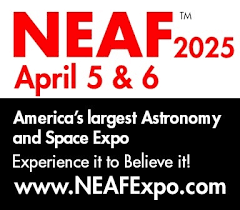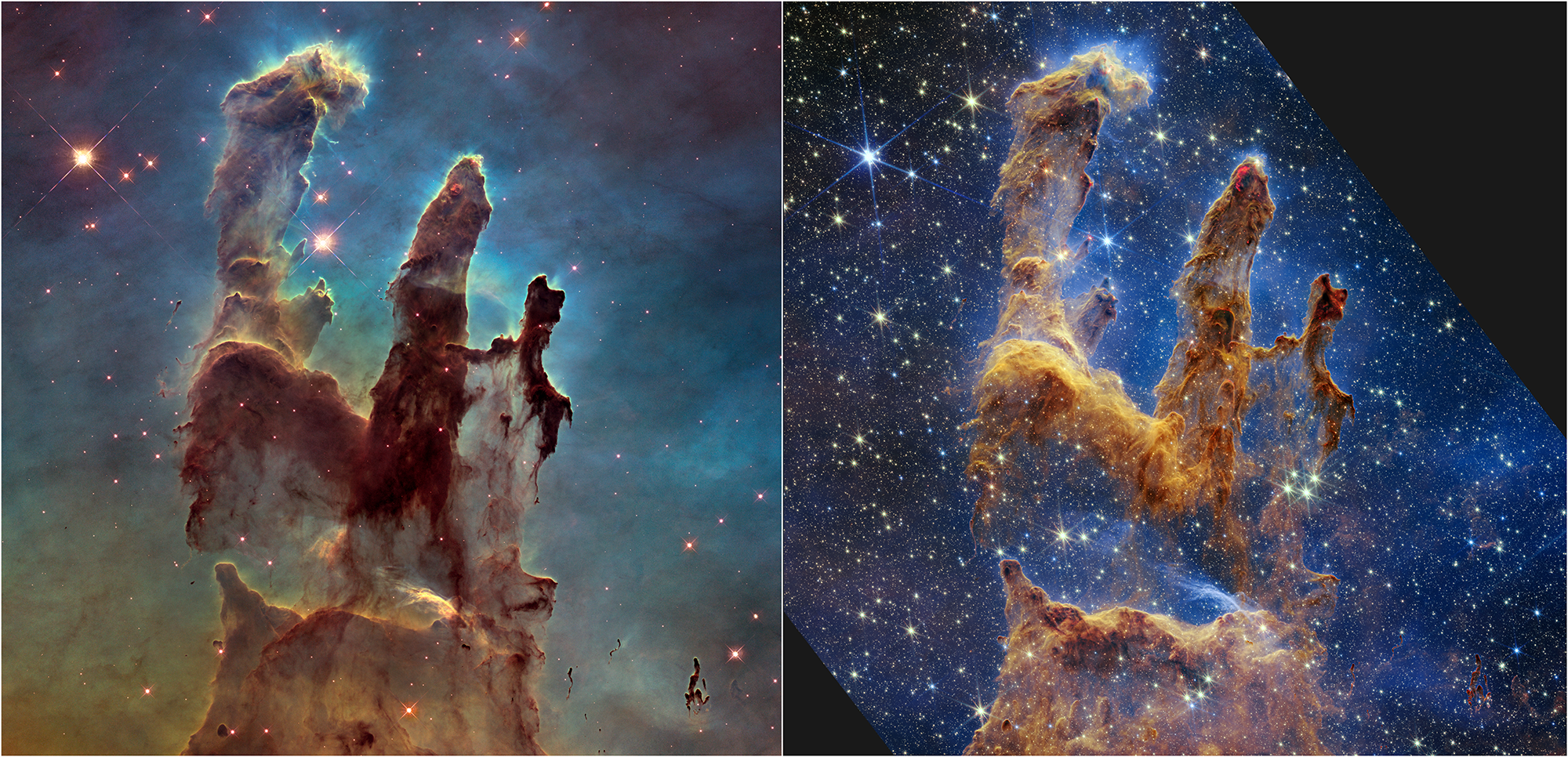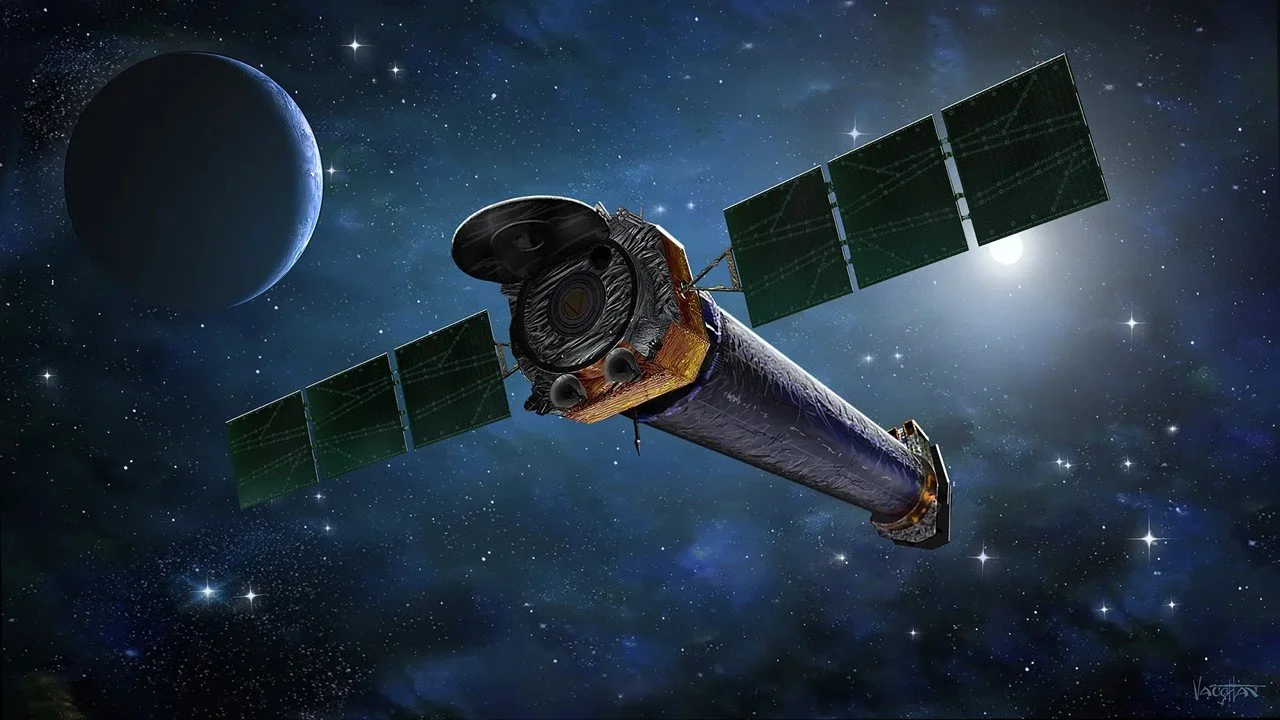Astral Projections Online April 2025
Check our Website for updated content at www.astra-nj.com
Club Presentations Wanted:
Does anyone have any astronomy items of interest to share with the membership?
Please let us know at Club Contacts.
Club dues and membership. If you renew after March 31 you will be renewed as a new member.
ASTRAL PROJECTIONS ONLINE (APO for short) is an email-linked publication for members only. If you exit APO to the club website or other resources you will need to use the emailed link again to get back to it. If you wish to retain a copy please bookmark or refer back to the email. We will make all efforts to post by the first week of the month.
Submissions Welcome: Members are invited to submit articles, photos, news, or stories for inclusion with Astral Projections Online. Please contact the ASTRA Webmaster.
Event Calendar
EVENT Cancellations: Members will receive email notifications of an event cancellation.
Upcoming April ASTRA Meeting
ASTRA's next meeting will be Friday, April 11, 2025, at 7 PM EST.
Upcoming Star Parties
April 5, 2025 - Jakes Branch - 8:30 PM
May 17, 2025 - Patriots Park - 9 PM
May 31, 2025 - Jakes Branch - 9 PM
Upcoming Public, County & State Park Presentations 2025
Public Outreach Presentations, if any member wishes to support ASTRA outreach efforts with the public, please let Vinny, Ro, or Jim know of any interest. Additional help for these events is always appreciated.
County and State Park presentations require a registration fee, call the hosting park to reserve.
April 3 - 5 PM to 8 PM - Toms River High School North - Greenfair
April 26 - 10 AM to 3 PM - Cattus Island - Nature Festival
May 15 - 6:30 PM to 7:30 PM - Brick Library - Moon Presentation
Website Updates …
Please visit our club website. We continue to have additional updates, if some content would be useful to members please let us know.
“Comets are like cats: they have tails, and do precisely what they want."
- David H. Levy, Astronomer
ASTRA Meeting -
April 11 at 7 PM
In our April meeting, is our annual telescope workshop. We will meet at 7 PM in the planetarium meeting room.
Hoping for a good turnout of the public and members for this event.
We are asking members to support our ASTRA meetings on Astronomy items of interest for presentations. Please let Jim, Ro, or Vinny know.
Event Reports
The March star party was shortened due to the weather.
We did have a good member turnout with some of the public chancing the weather. Once the raindrops started we packed it in. Then later after our traditional visit to The Office, it was all clear.
Jim Webster was able to get a Smart Telescope image of the Orion Nebula.
March ASTRA Meeting Summary
Our March 2025 meeting plans did not go as planned. John Enderson’s presentation will be presented at a later date. We watched some videos; one was on black holes, and the other was on Irish astronomy. We also discussed the Messier Marathon for the last weekend of March. That has since been rained out. For most of us, that included the partial solar eclipse.
County Park Presentations
Cattus Island Nature Festival is close at hand on April 26. We have some members who are planning to give us a hand. If you're interested, please let Jim Webster know. We will have the ASTRA Table and solar observing, weather permitting. In addition, DarkSky New Jersey and SciStarter will have another table, making our event corner the biggest. Images below are from 2024.



The next event would be Ocean Fun Day at Island Beach State Park on May 17, with one table setup and solar observing, weather permitting.
Upcoming Planetarium Events
I’ve been informed that the Planetarium is looking to host some events in April and May. For myself, I’ve agreed to participate, representing ASTRA, DarkSky New Jersey, and SciStarter. If anyone else is interested, please let me know. Maybe some solar observing in front of the planetarium. … More details to follow.
April 19 - Earth Day, May 3 - Astronomy Day
May 22 - Thursday evening event for Girl Scouts.
Members Submitted Articles & Items
Whatever it is, how you tell your story online can make all the difference.
Contact: Jim Webster, ASTRA President and Webmaster, regarding submissions.
AstroMag March 2025
A free online publication for Amateur Astrophotographers.
The Dwarflab Dwarf 3 is in this edition.
The Moon: Our Nearest Neighbor
Let’s explore some interesting features, facts, or myths about our nearest neighbor, the Moon. Without it, life on Earth would be totally different, if not at all.
The ten largest craters on the moon.
Journey across the Moon and explore the ten most gigantic craters. From Tycho to Clavius, each crater holds secrets of the lunar past. Discover the stories behind their names and the fascinating geological features that make them stand out as wonders of our nearest celestial neighbor.
Moon Views - NASA Eye’s
A simulated view of the moon presented by NASA Eyes.
NASA's Eyes is a suite of 3D visualization applications that allows everyone to explore and understand real NASA data and imagery in a fun and interactive way.
NASA Eye’s
Experience Earth, our solar system, nearby asteroids, the universe, and the spacecraft exploring them with immersive real-time 3D web-based apps. Start exploring your solar system now! Eyes - NASA Science
Outreach material below is distributed free for public outreach.
Around The Web
Dark Sky News
Dark Sky New Jersey's presentation on December 10 was well received on the impact of light pollution in and around New Jersey for the Association of New Jersey Environmental Commissions. We had over 50 people in attendance.
State Bill A2196
The New Jersey State Lighting Bill is back with the New Jersey State Assembly, and some modifications were made to the bill. For more information, the link to the bill is available: https://www.njleg.state.nj.us/bill-search/2024/A2196
High Point Scientific posting on The Ultimate Guide to Dark Sky Parks
On the lighter side of astronomy …
Considering all the bad weather we’ve encountered for observing, at least we can get a chuckle out of this one.
For more go to NASA Jet Propulsion Laboratory webpage: What’s Up: Skywatching Tips From NASA
This article and images are distributed by NASA Night Sky Network
The Night Sky Network program supports astronomy clubs across the USA dedicated to astronomy outreach.
Visit nightsky.jpl.nasa.gov to find local clubs, events, and more!
April Night Sky Notes:
Catch The Waves!
By Kat Troche of the Astronomical Society of the Pacific
This collage of images from the Flame Nebula shows a near-infrared light view from NASA’s Hubble Space Telescope on the left, while the two insets at the right show the near-infrared view taken by NASA’s James Webb Space Telescope. Much of the dark, dense gas and dust, as well as the surrounding white clouds within the Hubble image, have been cleared in the Webb images, giving us a view into a more translucent cloud pierced by the infrared-producing objects within that are young stars and brown dwarfs. Credit: NASA, ESA, CSA, STScI, Michael Meyer (University of Michigan), Matthew De Furio (UT Austin), Massimo Robberto (STScI), Alyssa Pagan (STScI)
The Electromagnetic Spectrum
If you’ve ever heard the term “radio waves,” used a microwave or a television remote, or had an X-ray, you have experienced a broad range of the electromagnetic spectrum! But what is the electromagnetic spectrum? According to Merriam-Webster, this spectrum is “the entire range of wavelengths or frequencies of electromagnetic radiation extending from gamma rays to the longest radio waves and including visible light.” But what does that mean? Scientists think of the entire electromagnetic spectrum as many types of light, only some of which we can see with our eyes. We can detect others with our bodies, like infrared light, which we feel as heat, and ultraviolet light, which can give us sunburns. Astronomers have created many detectors that can "see" in the full spectrum of wavelengths.
This illustration shows the wavelength sensitivity of a number of current and future space- and ground-based observatories, along with their position relative to the ground and to Earth’s atmosphere. The wavelength bands are arranged from shortest (gamma rays) to longest (radio waves). The vertical color bars show the relative penetration of each band of light through Earth’s atmosphere. Credit: NASA, STScI
Telescope Types
While multiple types of telescopes operate across the electromagnetic spectrum, here are some of the largest, based on the wavelength they primarily work in:
Radio: Probably the most famous radio telescope observatory would be the Very Large Array (VLA) in Socorro County, New Mexico. This set of 25-meter radio telescopes was featured in the 1997 movie Contact. Astronomers use these telescopes to observe protoplanetary disks and black holes. Another famous set of radio telescopes would be the Atacama Large Millimeter Array (ALMA) located in the Atacama Desert in Chile. ALMA was one of eight radio observatories that helped produce the first image of supermassive black holes at the center of M87 and Sagittarius A* at the center of our galaxy. Radio telescopes have also been used to study the microwave portion of the electromagnetic spectrum.
Infrared: The James Webb Space Telescope (JWST) operates in the infrared, allowing astronomers to see some of the earliest galaxies formed nearly 300 million years after the Big Bang. Infrared light allows astronomers to study galaxies and nebulae, which dense dust clouds would otherwise obscure. An excellent example is the Pillars of Creation located in the Eagle Nebula. With the side-by-side image comparison below, you can see the differences between what JWST and the Hubble Space Telescope (HST) were able to capture with their respective instruments.
NASA’s Hubble Telescope captured the Pillars of Creation in 1995 and revisited them in 2014 with a sharper view. Webb’s infrared image reveals more stars by penetrating dust. Hubble highlights thick dust layers, while Webb shows hydrogen atoms and emerging stars. You can find this and other parts of the Eagle Nebula in the Serpens constellation. Credit: NASA, ESA, CSA, STScI, Hubble Heritage Project (STScI, AURA)
Visible: While it does have some near-infrared and ultraviolet capabilities, the Hubble Space Telescope (HST) has primarily operated in the visible light spectrum for the last 35 years. With over 1.6 million observations made, HST has played an integral role in how we view the universe. Review Hubble’s Highlights here.
The Crab Nebula, located in the Taurus constellation, is the result of a bright supernova explosion in the year 1054, 6,500 light-years from Earth. Credit: X-ray: NASA/CXC/SAO; Optical: NASA/STScI; Infrared: NASA/JPL/Caltech; Radio: NSF/NRAO/VLA; Ultraviolet: ESA/XMM-Newton
X-ray: Chandra X-ray Observatory was designed to detect emissions from the hottest parts of our universe, like exploding stars. X-rays help us better understand the composition of deep space objects, highlighting areas unseen by visible light and infrared telescopes. This image of the Crab Nebula combines data from five different telescopes: The VLA (radio) in red; Spitzer Space Telescope (infrared) in yellow; Hubble Space Telescope (visible) in green; XMM-Newton (ultraviolet) in blue; and Chandra X-ray Observatory (X-ray) in purple. You can view the breakdown of this multiwavelength image here.
Try This At Home
Even though we can’t see these other wavelengths with our eyes, learn how to create multiwavelength images with the Cosmic Coloring Compositor activity and explore how astronomers use representational color to show light that our eyes cannot see with our Clues to the Cosmos activity.
Let’s Explore Space - What’s in the Sky April 2025
By StarWalk Astronomy App - Sky Tonight
Please let me know if this is preferred instead of posting on individual constellations and deep sky objects. This will cover what was being posted in the past.
Mining data from NASA’s Chandra X-ray Observatory, astronomers studied relics that a system called GRO J1655-40 left behind after it exploded. This “supernova archaeology” uncovered important clues about a self-destructing star, probably more than a million years ago.
Tonight’s Sky: No longer posting
October 2024 was the last updated posting of Tonight’s Sky. It is still available, via YouTube.
Linked is the twelve-month playlist on YouTube.
Any suggested replacements, let me know.
Visit the STScI which produces Hubblesite.org video overviews for Tonight’s Sky.
They can be found both on Facebook and stsci.edu.
Submissions Welcome
Members are invited to submit articles, photos, news, or stories for inclusion with Astral Projections Online. Please contact the ASTRA Webmaster.























